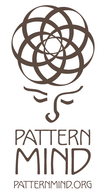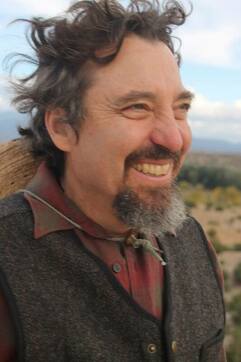Pattern Mind

“Look at the pattern below:

The alphabet is arranged in a particular pattern here. What is it? If you were illiterate you would more easily see it. Initially, I looked for an arithmetical pattern, but that does not work. Or some form of wave… Is it Morse code? No. What is it? The letters on the upper line consist of all straight lines and those on the lower line all contain curves. Once you know, it is obvious. Why is something so obvious so difficult to see? What else are we missing? How does this impact our effectiveness? How do we learn to see patterns not things?” – Joel Glanzberg, Pattern Mind, 2019.
Joel’s question of “why is something so obvious so difficult to see” is one that becomes increasingly present as we learn to observe through an integrated, patterned lens. Why are we paying millions of dollars for infrastructure damage during flash floods in the southwest and yet still designing streets that act as rifle barrels shooting water past thirsty trees barricaded off by curbs? Why are we designating billions to road improvement and to lane expansion and not to alternative transit? Why are we designing homes with thirsty monoculture lawns and without any rainwater harvesting, greywater, and water-wise appliances yet complaining about water shortages in the west? The more we learn, the more we ask these important questions. It all seems so obvious, but we are raised to see pieces, to observe objectively, and to associate wonder with childhood and childhood alone. Yet we could learn a lot from the wonders, systems, and patterns in nature.
Although based out of Santa Fe, NM, Joel Glanzberg has travelled across North America, helping us shift away from segregated towards patterned thinking. His journey reads as an effort to help us regain what was lost from our ancestors – of understanding, respecting, and playing an important role in nature. If we were able to better engage in pattern thinking, we could find those critical points to shift and create a new ripple in the pond, a new pattern that may make a whole lot more sense. Least change for the greatest effect.
Joel is a founding partner of Regenesis Collaborative, working with schools, farms, resorts, parks, housing, neighborhoods, and more in an effort to consider the whole living ecosystem. Through this work, he is helping us re-envision our roles as humans from a source of destruction and degradation to health and regeneration. Why do what he is instead of teaching the standard Permaculture Design Certification? Joel wanted to make way for new leaders to join the field and enact change. He sees hope in young permaculturalists teaching and also working with policy makers, economic systems, community design, and other important change makers in our society. Through these large influential networks, we can enact largescale positive, regenerative change.
Discover more about Joel and Pattern Mind at: http://patternmind.org/

Recent Posts

